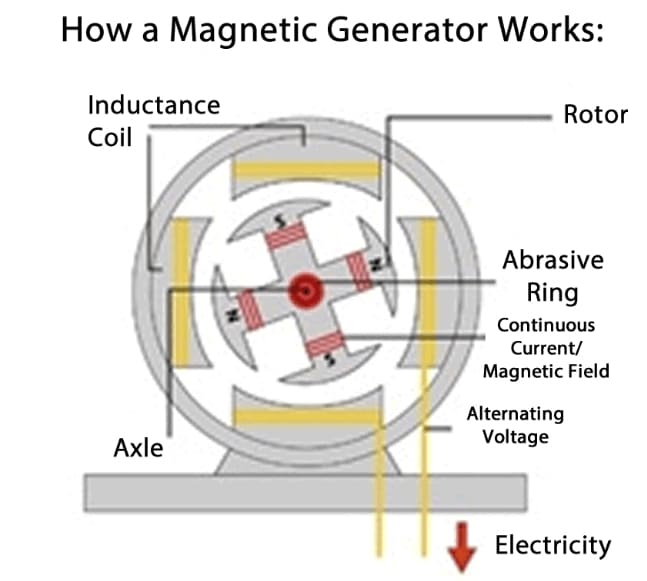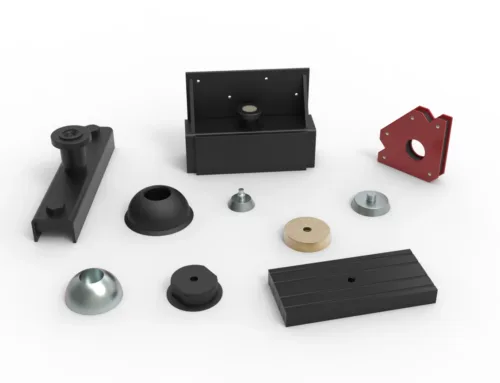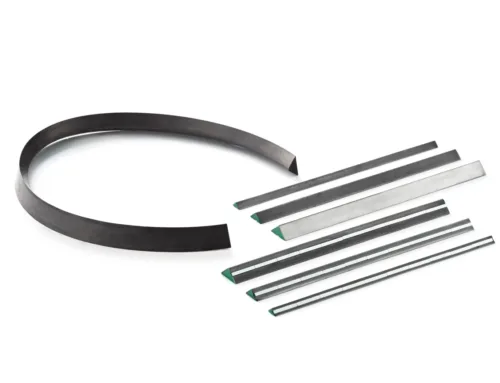Did you know a generator can create electricity without fuel? Magnetic generators offer a smart, sustainable solution for power needs.
A magnetic generator uses permanent magnets to produce electrical energy, offering high efficiency and low maintenance.
From wind turbines to backup power systems, magnetic generators are reshaping how we generate electricity.
permanent magnet generator
Magnetic generators rely on special magnets for power. Let’s dive into their unique design.
A permanent magnet generator (PMG) generates electricity using rotating permanent magnets around conductors, creating a magnetic field that induces electrical current.

permanent magnet generator design( photo from MDPI)
How PMGs stand out
Permanent magnet generators (PMGs) don’t need external excitation. This means fewer components and greater efficiency. Key parts include:
| Component | Function |
|---|---|
| Magnets | Create a magnetic field |
| Rotor | Spins magnets around the stator |
| Stator | Contains coils to capture the induced current |
| Bearings | Support the rotor’s movement |
In my work, I’ve seen clients in the wind energy sector switch to PMGs because they cut maintenance costs and deliver more power per kilogram than traditional generators.
How does a magnetic generator work?
It might sound like magic, but magnetic generators follow basic physics.
A magnetic generator works by rotating magnets around conductive coils, inducing a flow of electrical current due to electromagnetic induction.

How a magnetic generator works
Understanding the process
Here’s how it happens:
1. Magnetic Field Movement
When magnets rotate near conductive coils, they disturb the electrons in the conductor. This creates an electrical current.
2. Electromagnetic Induction
Based on Faraday’s Law, the changing magnetic field induces a voltage in the coil.
3. Energy Conversion
The mechanical energy from rotation is converted into electrical energy.
| Step | Description |
|---|---|
| Magnet rotation | Mechanical energy moves magnets |
| Induced current | Electrons in the coil begin moving |
| Electrical output | Current flows to the load |
One of my clients in the hydroelectric industry implemented PMGs for off-grid energy solutions, reducing operational costs and improving reliability.
Is it possible to make a generator out of magnets?
It sounds futuristic, but the answer is yes.
Yes, you can make a generator using only magnets and coils. These are called permanent magnet generators (PMGs), and they’re used worldwide.
DIY or professional?
Building a magnetic generator isn’t simple. It requires precise alignment of magnets, durable coils, and a reliable rotor system. Commercial designs use advanced materials like NdFeB or SmCo magnets for strong fields and temperature resistance.
Considerations:
- Material quality: Stronger magnets yield more power.
- Engineering precision: Poor alignment reduces efficiency.
- Cost vs. performance: DIY models may work but can’t match commercial systems.
| Aspect | DIY PMG | Commercial PMG |
|---|---|---|
| Magnet strength | Moderate | High |
| Efficiency | Low to moderate | High |
| Durability | Limited | Long lifespan |
When I help clients design PMGs, I emphasize using quality magnets and precise assembly to ensure efficiency and safety.
How efficient are magnetic generators?
Efficiency is the name of the game in power generation. So, how do magnetic generators measure up?
Magnetic generators are highly efficient, often exceeding 90%, due to minimal mechanical losses and reduced energy consumption.
Why PMGs excel
PMGs eliminate the need for brushes, slip rings, and external excitation systems, cutting down on energy loss and maintenance. Their high power density means more output for the same size.
Efficiency factors:
- Material quality: High-grade magnets reduce losses.
- Design precision: Optimized rotor-stator spacing enhances performance.
- Operating conditions: Cooler environments improve output.
| Factor | Impact on Efficiency |
|---|---|
| Magnet grade | Higher grade, higher efficiency |
| Coil design | Tighter coils, better performance |
| Rotation speed | Optimal speed improves output |
I once worked with a wind turbine manufacturer who switched to PMGs. Their system’s efficiency increased by 15%, reducing energy waste and boosting output.
Conclusion
Magnetic generators are shaping the future of power, offering high efficiency, compact design, and sustainable energy solutions for diverse applications.





[…] these factors tie into devices like generators is important. Exploring the detailed workings of a magnetic generator can give you a clearer picture of why magnet quality matters in real-world […]